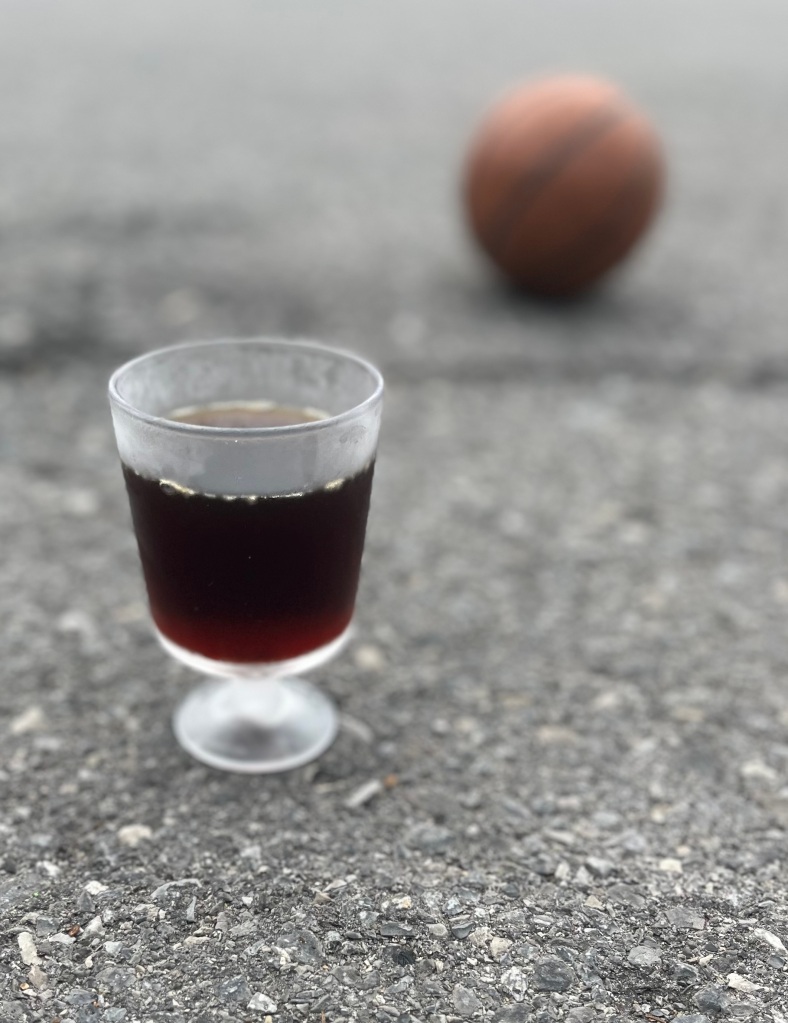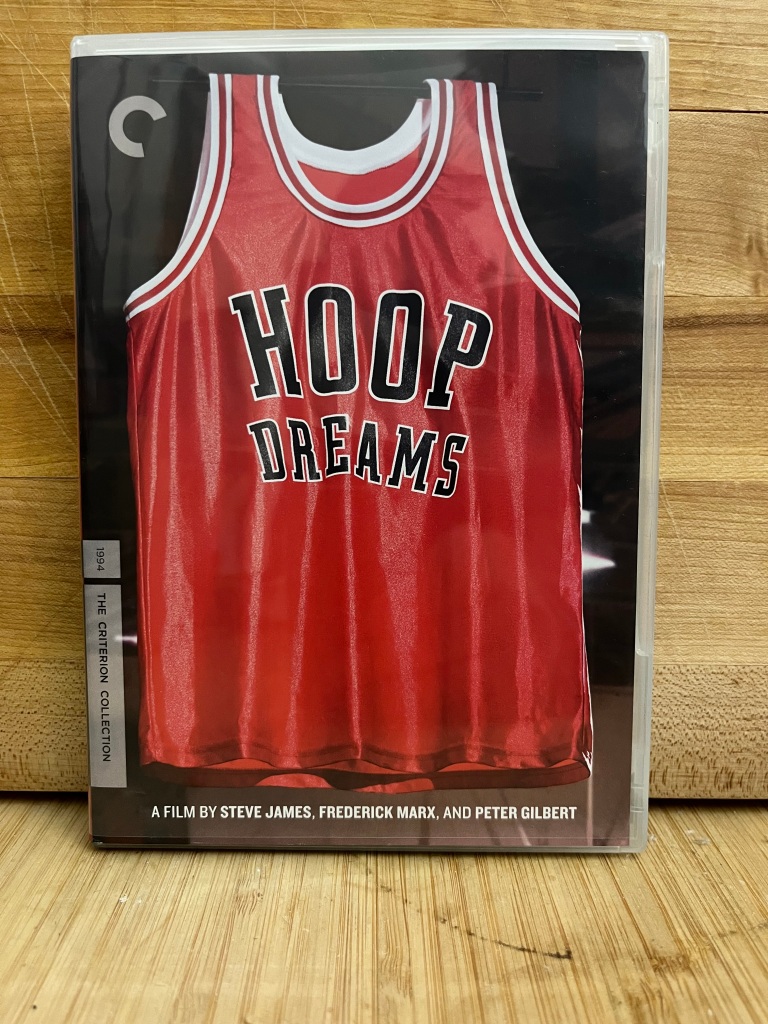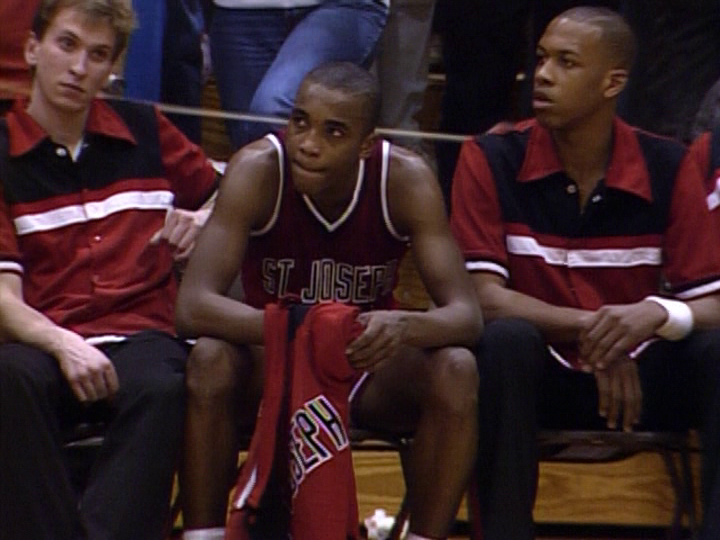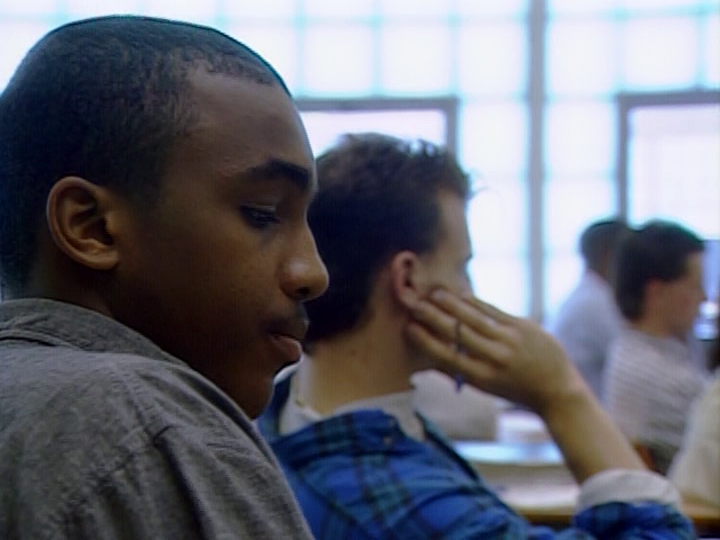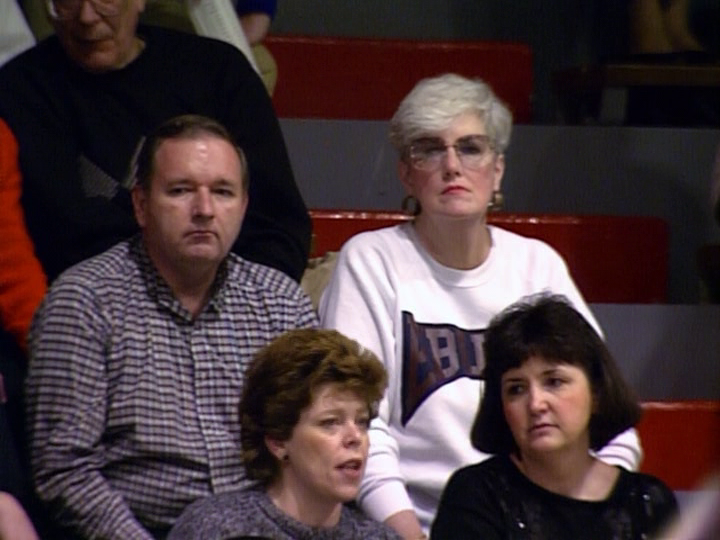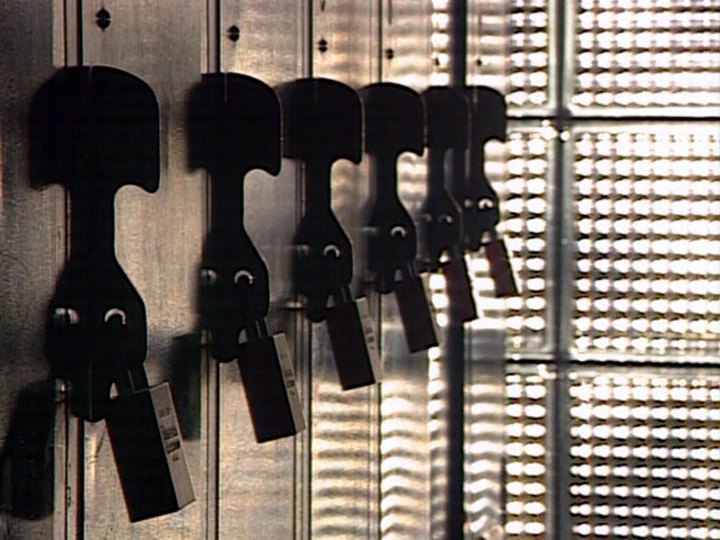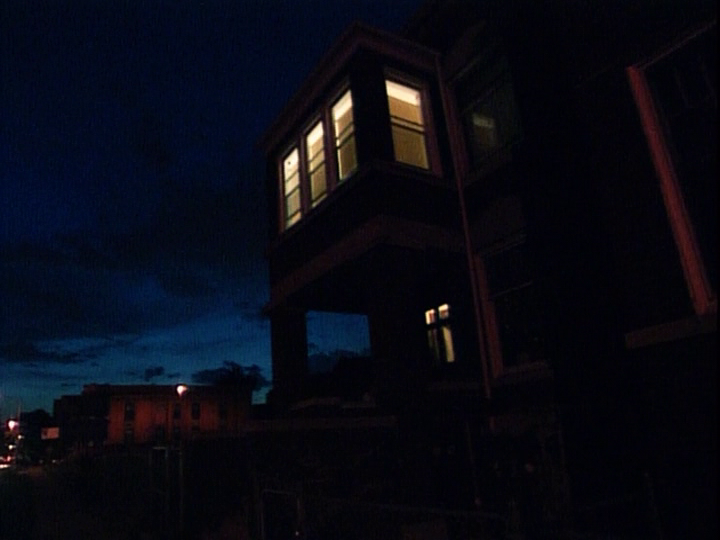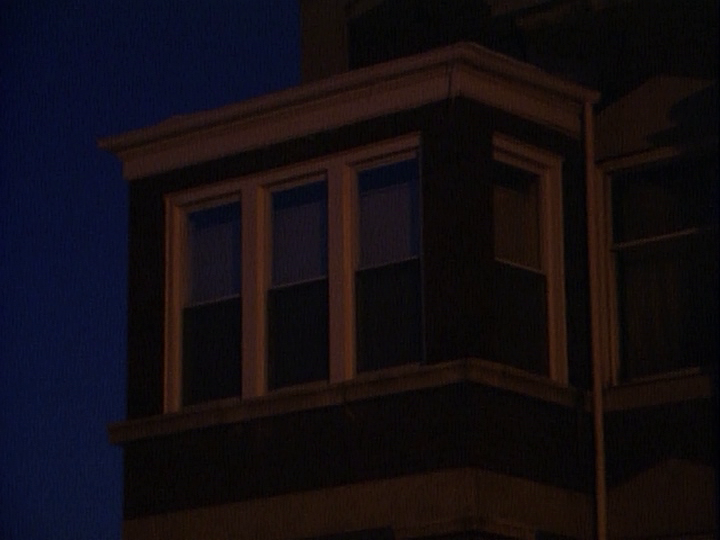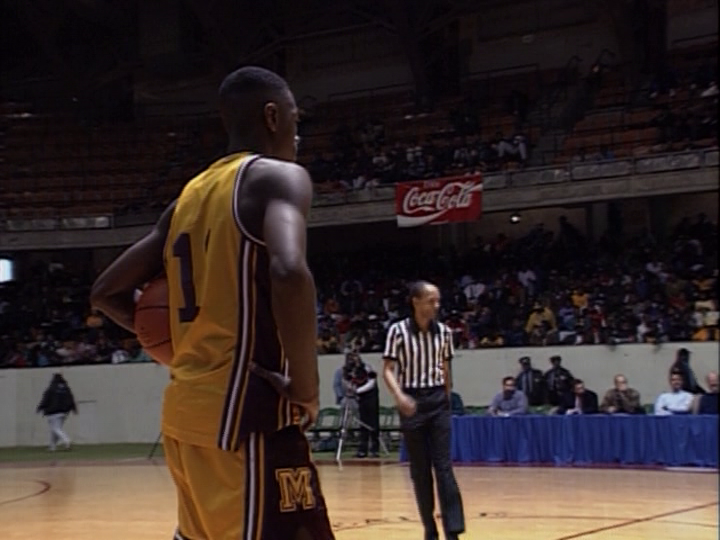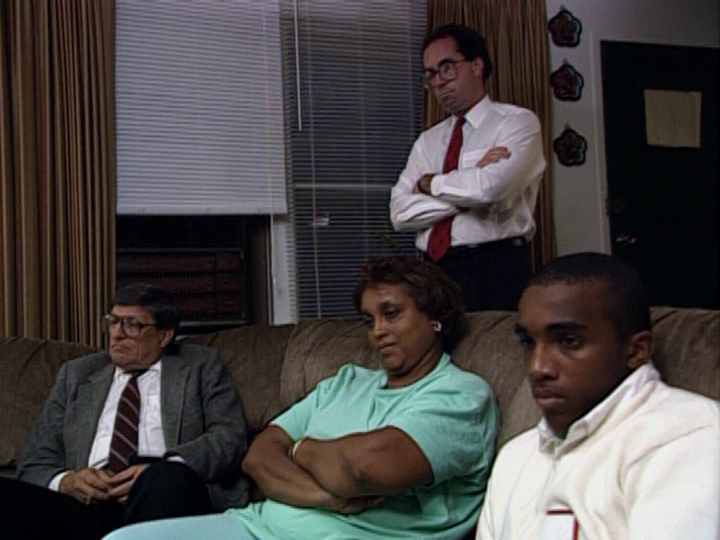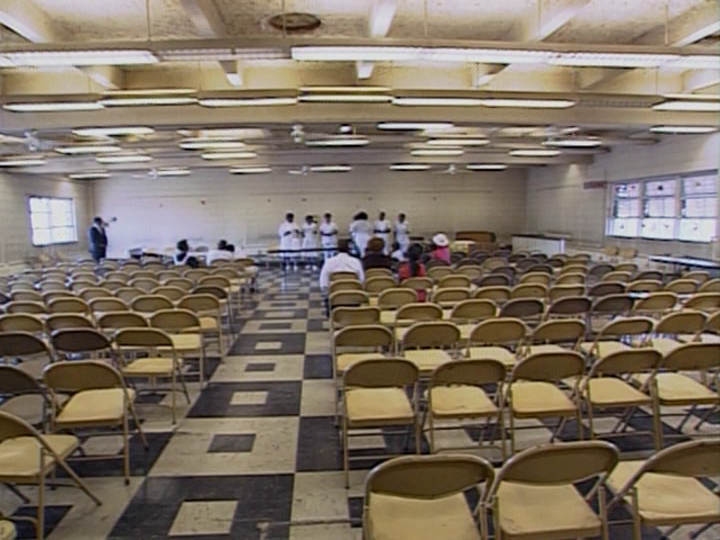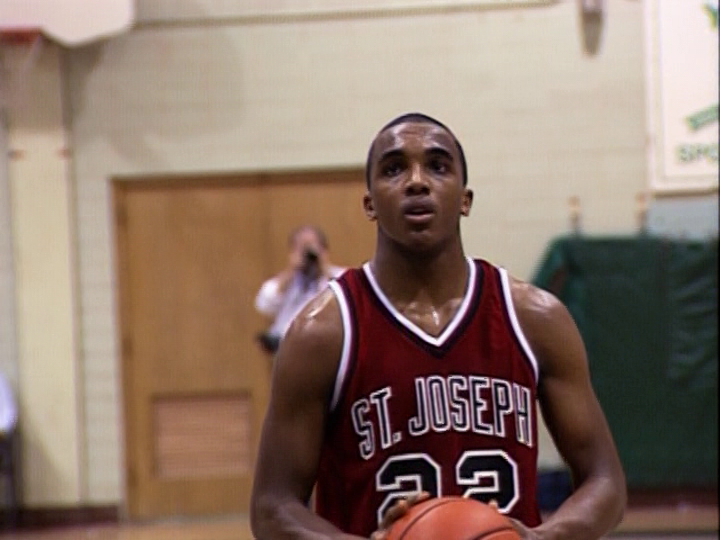When I launched this blog five and a half years ago in 2018, my reasons for naming it Prodigal Cinephile were partly aspirational. Sure enough, although I easily kept up with the pace I set for myself of at least six essays per year supplemented by occasional short posts for its first eight months of existence, a move across state lines in summer, 2019 derailed me for the rest of that year. I returned briefly in early 2020, but then the world turned upside down and I only published twice more before the end of 2021. Inspiration struck shortly afterward, though, when it occurred to me that tying a movie to the cocktail recipes I was writing on a chalkboard in my dining room every month might prove to be a good way of generating regular content. It did indeed and 29 posts later, that series is still going strong! One year later I decided to make a point of tweeting something about every new movie I saw. Although this idea didn’t stand the test of time, it did result in me becoming the last cinephile on earth to join Letterboxd this past summer, which I have found to be the perfect place to jot down notes that I can refer back to later. The final piece of the puzzle fell into place this fall when turned my weekly study of Ithaca, New York movie showtimes, into a platform for brief commentary on what I’m seeing in theaters and watching at home.
So it is that I look around today and see that at long last I’m truly back to using cinema as a window on the world and a lens through which I can interrogate my thoughts and feelings and refine them into a more consistent and generous philosophy. I believe that seeing one film a week in theaters really does make me a better person, and it occurred to me the other day that my daughters may someday find all these writings interesting, which ought to provide additional motivation at times when my energy is at low ebb and thus increase the sustainability of my approach even further. Just as the “mixtapes” I’ve been making bi-annually for the past decade have encouraged me to explore a ton of music I probably wouldn’t have discovered otherwise, having a system has exposed me to a larger, more adventurous selection of movies as well. Since last year’s Oscars, for instance, I have seen 117 new films (including 51 in theaters, where I also attended 28 repeat or repertory screenings). I also managed to catch 39 of the top 50 finishers in the IndieWire Critics’ Poll, 42 of the top 50 on the Critics’ Top Ten Best Movies of 2023 list, and everything in either one’s top 25 except John Wick: Chapter Four, which my loving wife and I are saving for a movie marathon since we haven’t seen any of the three previous films in the series either. To be sure, my 25-year-old self would not be impressed! But he had a lot more free time on his hands and for the first time in ages, I feel like I sampled enough of what Movie Year 2023 had to offer to make a top ten list reflective more of my tastes than what I missed.
Before I get into my selections, why am I doing this in March instead of December like everybody else? The answer is simple: many of the year’s most important films don’t make it as far as Ithaca until after January 1 and our local theaters are dominated by Academy Award nominees in the weeks leading up to the ceremony. As someone who isn’t able to travel to see movies more than a handful of times each year, Oscar night therefore makes much more sense to me as an occasion to mark the end of one year and the beginning of another. Without further ado, then, here are my favorite films of 2023:
10. Mambar Pierrette
Rosine Mbakam’s debut narrative feature seems like the culmination of the lessons learned from the four documentaries she directed between 2018-23 and promises great things to come. The reason it’s on this list, though, is because of its depiction of a Cameroonian seamstress (Pierrette Aboheu Njeuthat in the year’s best performance by a non-professional actor) who perseveres through hardship thanks to the self-worth that fulfilling work, a loving family, and supportive community have given her and a sudden pivot away from what initially appears to be a descent into miserabilism into something far more surprisingly, wise, and hopeful which made me laugh out loud with delight.
9. A Thousand and One
I started getting into movies in high school in large part because they served as a gateway to other forms of expression like literature, fashion, and most especially music. The days when the soundtrack to a movie like 24 Hour Party People could completely rock my universe are mostly gone, but I still appreciate discovering something new. A Thousand and One featured my favorite original movie music of the year, and I gave the opening theme by Gary Gunn pride of place on my 2023: The Mixtape, Vol. 1 compilation. I was also impressed by Teyana Taylor’s lead performance as a pressure-hardened, combustible woman named Inez de la Paz, and by the slow metamorphosis of an empty apartment into a home followed by its sudden collapse into haunted ruin.
8. 20 Days in Mariupol
Transformation is one of the subjects of 20 Days in Mariupol as well, in this case the reduction of a thriving city into a desolate wasteland in less than three weeks after Russia’s invasion of Ukraine in February, 2022. Director Mstyslav Chernov situates the devastating images of Ukrainian citizens of all ages suffering for the crime of living too close to an area of strategic importance that he and his fellow and Associated Press journalists made famous in the context of the other footage they shot, which in many cases is far too graphic for television. Timely for its unflinching depiction of war crimes committed by the Russian Federation; timeless as a reminder that until we grow up as a species, no human being on this planet is ever more than a few days away from having every good thing in their life utterly destroyed.
7. The Teachers’ Lounge
A feature-length rebuttal to the blackboard scene in A Christmas Tale which I wrote about two years ago. Leonie Benesch’s Carla Nowak and Leonard Stettnisch’s Oskar are, like that film’s Claude (Hippolyte Girardot) and Abel (Jean-Paul Roussillon), believers in the power of logic and mathematics to help us navigate the ground before us, no matter how rocky it is. But a Rubik’s Cube is nothing compared to the social dynamics of a modern school, and far from showing them the way to freedom, all of their calculations just make everything worse. Benesch is magnificent, as are the actors who play the “bad” teachers, who bring just enough humanity to their roles to make us being to wonder if our perception of them is the result of testimony from an unreliable narrator when things start to go haywire, especially when combined with the claustrophobic framing and Marvin Miller’s tense score.
6. Poison
My favorite of the five movies directed by Wes Anderson which were released in 2023. Each of the four shorts based on Roald Dahl stories is a fine adaptation, but Poison does the best job of honoring and enhancing its source material through decisions like having Ben Kingsley’s Dr. Ganderbai hold objects like a piece of rubber tubing, bottle of alcohol, and syringe up to the camera as Dev Patel’s Timber Woods narrates in rapid-fire staccato on from the other half of a split-screen composition to draw attention to Dahl’s specific word choices and the camera work and lighting which lead up to the completely original ending.
5. All of Us Strangers
All of Us Strangers would make a great double feature with Petite Maman, one of my favorite movies from 2022, which also suggests that understanding our parents (or, conversely, our children) is an undertaking which is neither precisely poetic or psychological, but something else. It contains some of favorite scenes of the year, including the opening shot, an all-time great Christmas sequence starring the song “Always on My Mind” by the Pet Shop Boys which I think I’ve listened to at least once a day since seeing it, and Andrew Scott’s Adam literally forgetting how to be intimate with someone, which is not something I can remember ever seeing on screen before, but which I assure you can happen! Scott is brilliant, as are Paul Mescal, Claire Foy, and Jamie Bell, and there’s a shaking head on a train that reminded me of the painter Francis Bacon via the film Jacob’s Ladder.
4. The Boy and the Heron
I discovered director Hayao Miyazaki in college, but my daughters are growing up with his films. My Neighbor Totoro was a staple of their earliest years, and now The Boy and the Heron has arrived in their lives at a time when my oldest is struggling to make her peace with the concept of mortality. She still isn’t quite old enough to really dive into it, but now she knows it’s waiting for her when she’s ready. My line on this movie is that if it had been playing the 2002 Toronto Film Festival instead of Spirited Away, I believe my life would have been changed in much the same way. That remains true, but I’ve stopped telling everyone how surprised I am that I enjoyed the dubbed version as much as the subtitled one now that I’ve read David Ehrlich’s IndieWire article about how much work went into it. Joe Hisaishi’s score was my second favorite of the year after A Thousand and One.
3. Menus-Plaisirs — Les Troisgros
Although this four-hour long portrait of the Les Troisgros family of restaurants directed by legendary documentarian Frederick Wiseman earned a spot on my list while The Taste of Things didn’t, the latter’s Dodin Bouffant (Benoît Magimel) would surely be gratified to see what kind of hands French gastronomy is in and to know that they’re still consulting Escoffier on the proper cleaning and cooking of brains nearly a century after his death! It’s constructed like a progressive menu that only fully comes together in the dessert course, and the pace is deliberately unhurried except when it’s not, mirroring the rhythm of a high-end kitchen. Effective pairings can be contrasting as well as congruent, and Menus-Plaisirs — Les Troisgros would also go well with one of my favorite films from last year, The Menu, were it not for its length: whereas the latter’s Hawthorn was hermetically sealed off from the rest of the world, this movie’s Le Bois sans Feuilles is integrated into its surroundings via relationships with the farmers and artisans that supply its ingredients and more accessible offshoot establishments like a food truck.
2. The Killer
The Killer is in conversation with Le Samouraï from start to finish. Alain Delon’s Jef Costello from the latter film is the very epitome of cool, but his apartment is so monochromatically drab that I genuinely wonder if it was a reference for the North Pole scenes from Elf. It’s unlikely that anyone will want to emulate the fashion choices of Michael Fassbender’s unnamed assassin from The Killer, but when he’s not hanging out in abandoned WeWork offices, he lives in a palatial home in the Dominican Republic with a beautiful woman (Sophie Charlotte) who appears to really love him. Both have knowledge of a shadow world of garages and storage units where a person with the right connections can pick up new license plates or guns and they ply their trade not with futuristic gizmos, but everyday objects: Costello uses the biggest keychain you’ve ever seen to steal cars, while Fassbender breaks into “high-security” penthouses with a tool he buys online and retrieves from an Amazon Locker. Finally, the two films have basically the same ending: these men live by a strict code that liberates them, but also dictates their fate. What fascinates me about The Killer is how dramatically different its conclusion feels despite the fact that Fassbender’s character isn’t any more or less noble or rigorous than Costello’s — it’s all in how the story is told. Unless you too spent huge portions of your teens and twenties carefully adjusting the brim of your fedora and listening to the Smiths, this film won’t resonate with you nearly as much as it does with me, but it’s also technically perfect and features my third-favorite score of the year (by Trent Reznor and Atticus Ross), brilliant cinematography and sound mixing, and Tilda Swinton, so I feel confident in recommending to everyone anyway!
1. Ferrari
Ferrari contains both my favorite small moment and grand set piece from Movie Year 2023, Adam Driver’s Enzo Ferrari deftly twisting his wrist while pouring wine so as not to spill a single drop and the thousand-mile long Mille Miglia road race respectively, which is a testament to the meticulous attention to detail present in every frame. Fellow holiday season release The Iron Claw also did a good job of depicting the extreme emotional and physical toll that professional sports can take on athletes and their families and even gestured toward their role in global politics, which I tend to value much more highly than celebrations of said athletes’ artistry and skill because contemporary television broadcasts have that pretty much down to a science. What separates Ferrari from the crowd is not just that it successfully accomplishes both of these things in one film, but that it shows how they’re two sides of the same coin: Ferrari is a national treasure (in the sense of possessing value for the country of Italy) not just because the cars he builds go fast, but because they push the boundaries of what is possible and safe, which, as he explains to his son Piero (Giuseppe Festinese) in another great scene, is what makes them beautiful. This is not to say that the 1957 Mille Miglia wasn’t a tragedy–the race was rightfully banned after the fatal crash unforgettably depicted in the film. But now consider how many wars have been fought since the wasteful loss of life described in the end titles for Napoleon and tell me why I shouldn’t continue to hold out hope that one day we’ll channel our irrepressibly competitive tribal urges entirely into sports.
* * *
Although no “old” movies totally blew my mind last year, some noteworthy experiences include seeing Matter Out of Place, which would have made my “Most Memorable Films of 2022” list had it arrived in Ithaca sooner, and my first two documentaries directed by Sergey Loznitsa (Babi Yar. Context and The Natural History of Destruction) at the Finger Lakes Environmental Film Festival; attending my first Nitrate Picture Show; and finally catching up with History Is Made at Night on The Criterion Channel. Three other first-time viewings stood out for me:
3. Werckmeister Harmonies
I don’t like to use one text as a cudgel against another, but I’ve been wondering if I would have found The Zone of Interest nearly as distasteful as I did had I not seen Werckmeister Harmonies at the Maine International Film Festival this summer. The latter movie does a fine job of evoking the Holocaust and inviting us to contemplate what happens when the people who commit such atrocities go home to their families at night in just a few scenes–it is really necessary to make their domestic lives the subject of an entire feature-length film?
2. Black Sheep
I watched this on The Criterion Channel in September when they included it in their terrific “Directed by Allan Dwan” series and it was the most fun I had with a movie all year. I have since purchased it on DVD and am now planning to feature it in a “Drink & a Movie” blog post next March–stay tuned!
1. Eijanaika
I watched as many films as I could directed by Shōhei Imamura last year in preparation for a review of Warm Water Under a Red Bridge and this was the one I’d single out as a “must see,” although The Ballad of Narayama is close and now is a great time to watch Black Rain, which is about a family that survives the dropping of an atomic bomb on Hiroshima, with Godzilla Minus One and Oppenheimer both up for Oscars. But I digress somewhat: Eijanaika is a productively messy, sprawling film which captures the end-of-the-world feeling of living through a pivotal moment in history (the Meiji Restoration) that we’re now all lamentably so familiar with.
* * *
Somehow I managed to see 48 out of 52 of this year’s Oscar nominees which means . . . that any predictions I might offer would still be completely useless, since I’ve never put any effort into studying what’s important to Academy voters. This does, however, mean that I have stronger rooting interests than usual! Here’s who I’ll be cheering for in each category:
Animated Feature Film: The Boy and the Heron, obviously, but I enjoyed all of this year’s nominees with the possible exception of Robot Dreams, which I haven’t seen yet.
Actor in a Supporting Role: Robert Downey Jr. for Oppenheimer, but I wish Paul Mescal and/or Jamie Bell had been nominated for their work in All of Us Strangers.
Actress in a Supporting Role: Da’Vine Joy Randolph for The Holdovers.
Documentary Feature Film: 20 Days in Mariupol, obviously, but as with the Animated Feature Film category, I think this is a pretty strong field even though many of my favorite documentaries of the year like Menus-Plaisirs — Les Troisgros and Smoke Sauna Sisterhood weren’t nominated.
Short Film (Live Action): The Wonderful Story of Henry Sugar. I have not yet seen either Invincible or Red, White and Blue, but director Wes Anderson and company set a pretty high bar, so I doubt it matters.
Cinematography: El Conde. Paula Luchsinger’s Carmencita’s baby bird first attempts to fly and vampires over Santiago at night in glorious black and white are some of my favorite images of Movie Year 2023.
Makeup and Hairstyling: Poor Things. Willem Dafoe’s prosthetics are a movie in unto themselves!
Costume Design: Poor Things, but I would not be disappointed to see Barbie win.
International Feature Film: The Teachers’ Lounge, obviously. Note: I have not yet seen Io Capitano.
Documentary Short Film: The Repair Shop, but I would not be disappointed to see Island in Between win.
Short Film (Animated): Letter to a Pig, but I would not be disappointed to see Pachyderme win. Or anything but War Is Over! really.
Production Design: Poor Things, but as with the Costume Design award I would not be disappointed to see Barbie win.
Music (Original Score): Killers of the Flower Moon. RIP Robbie Robertson.
Visual Effects: The Creator, but I would not be disappointed to see Godzilla Minus One win.
Writing (Original Screenplay): The Holdovers.
Writing (Adapted Screenplay): Oppenheimer.
Sound: Oppenheimer.
Music (Original Song): “I’m Just Ken” from Barbie.
Film Editing: Killers of the Flower Moon. Did you know that Thelma Schoonmaker is a 1961 Cornell grad?
Director: Martin Scorsese for Killers of the Flower Moon, but I would not be disappointed to see Christopher Nolan win for Oppenheimer.
Actor in a Leading Role: Colman Domingo for Rustin, but I would not be disappointed to see Cillian Murphy win for Oppenheimer or Paul Giamatti win for The Holdovers.
Actress in a Leading Role: Emma Stone for Poor Things, but I would not be disappointed to see Lily Gladstone win for Killers of the Flower Moon.
Best Picture: Killers of the Flower Moon, but I would not be disappointed to see Oppenheimer win.


